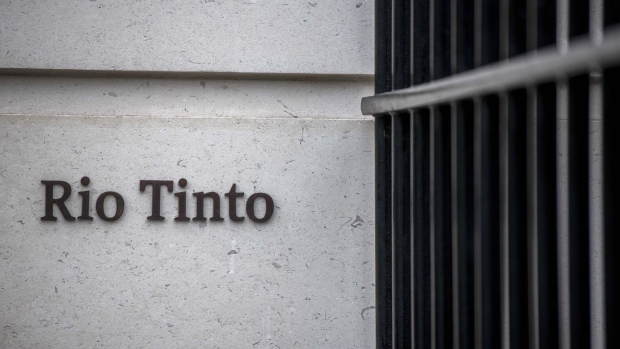Feb 23, 2022
Rio Tinto to pay US$7.7B dividend as profit hits record
, Bloomberg News

All Rio’s commodities fired in 2021 as pent-up industrial demand and supply-chain snares created a bumper year across the natural-resources industry. Iron ore, by far the company’s most important commodity, hit record prices last year, as did copper. Even aluminum, a long-time headache for Rio since its disastrous purchase of Alcan Inc. in 2007, is on the cusp of hitting an all-time high.
The world’s second-biggest miner joins other commodities giants in delivering record profits and huge returns to investors: Glencore Plc last week posted its highest-ever profits, while BHP Group reported bumper profits for its half-year. Anglo American Plc is set to report earnings Thursday.
“There is really good demand for our products,” Chief Executive Officer Jakob Stausholm said in an interview with Bloomberg TV. “Short term, there is good demand from China. Longer term, for a company like Rio Tinto, the metal and minerals we are producing are really being helped by the energy transition.”
Rio’s underlying earnings surged 72 per cent from a year earlier to US$21.4 billion, it said in a statement Wednesday. The company will reward shareholders with dividends totaling US$7.7 billion. Like many of its rivals, Rio is seeking to grow in commodities that are key for the green-energy transition, like copper and lithium, though it’s still heavily dependent on iron ore.

Despite the huge profits, Rio still faces multiple challenges. Stausholm, who has been in his position for just over a year, is trying to change the company’s culture after it destroyed ancient Aboriginal Australian heritage sites, sparking a public backlash. Earlier this month, it published an independent report that found evidence of widespread sexual harassment, racism and bullying.
“I’m absolutely convinced we can address that,” Stausholm told Bloomberg TV. “It’s about creating a safer environment where people are happier working and, ultimately, it will create a more effective company.”
Rio’s outlook remains tied to policy moves in Beijing, with the authorities keen to keep ore price gains in check, while the company also faces headwinds from growing cost pressures and increased investor scrutiny of its management of environmental, social and governance issues.
The London-based miner expects the cost of production at its Pilbara iron ore operations to rise by as much as 13 per cent this year. It forecast capital expenditure of about US$8 billion in 2022, rising to a range of US$9 billion to US$10 billion in 2023 and 2024.
Rio delivered a “brilliant scorecard,” but ore prices so far in 2022 are tracking lower than the previous year, Peter O’Connor, mining analyst at Shaw & Partners, said in a note. While soaring copper and aluminum prices might offer some insulation, they are far less important to Rio than iron ore, which accounts for about 75 per cent of its earnings.
Iron ore prices have been volatile, swinging from historic highs above US$230 per ton in May only to retreat to the mid-US$80s in the second half of the year as China reined in the output of its steelmakers to meet stricter environmental standards. The market has since rallied, touching US$150 earlier this year after monetary easing and relaxed climate targets raised expectations for robust Chinese steel output in the year ahead.
Rio’s bid to diversify its business to gain more exposure to metals poised to benefit from the green-energy transition also faces challenges.
The Serbian government in January blocked Rio’s plans to build Europe’s biggest lithium mine following opposition to the development among the local community; on Wednesday, the company said it was reviewing the legal basis of Serbia’s decision.
The company also has been hit with delays and cost overruns at its US$6.9 billion copper expansion project at Oyu Tolgoi. In January, Rio sealed a deal with the Mongolian government to waive debt owed by the state in order to move the project forward.


